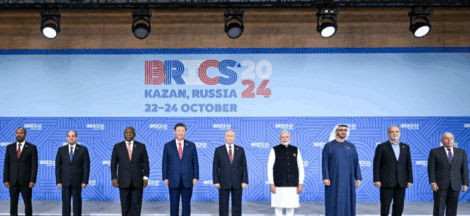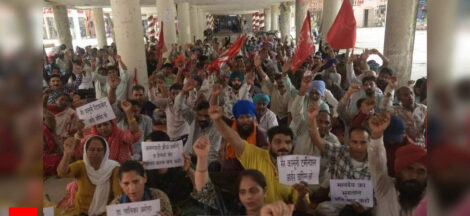By K Raveendran
The line-up against Narendra Modi for the 2024 Lok Sabha elections is expanding steadily, but not in terms of its overall clout, but in the number of divisions.
Mamata Gandhi was seen as one of the early claimants, but her Trinamul is now orbiting as a lone satellite outside the constellation and moving farther away. Rahul Gandhi has been on a trip of his own as well, but without a clear target in sight or even mind. Telangana chief K Chandrasekhar Rao has mounted a stand-alone campaign to claim the mantle of leading a united opposition, but there is a bid divide between his southern ambition and northern reality, making it any man’s game.
A somersault by Bihar’s self-proclaimed strongman Nitish Kumar to form the newest opposition government in the country has created certain euphoria about a possible field opposite Modi’s and his JD-U is putting the idea across with a lot of noise, though with much less conviction. The race has now been joined by Arvind Kejriwal, who according to AAP, will be the real challenge to Modi in 2024.
Although past performance is no guarantee of future results, as they say in the stock market, let alone success, the more crowded the opposite field, the easier it would be for Modi to dodge the resistance. Individual forays does not necessarily lead to team success and often it is the reverse that proves right. Division on one side results in multiples of momentum on the other, compared to what would have been the case otherwise. To that extent, it amounts to writing the cheque in favour of the incumbent prime minister.
Though Mamata Banerjee has been keeping good company with the non-BJP chief ministers on various issues agitating the opposition, including unleashing of central agencies on political opponents, her approach in the vice-presidential election, in which her party legislators abstained from voting, has caused discomfort among opposition parties. So even before some understanding could be reached on fielding a united opposition for 2024, things stand more complicated.
AAP has added to the buzz, by claiming that it would be Modi versus Kejriwal straightaway in twenty-four. It has used the CBI raids against Kejriwal’s deputy Manish Sisodia as the setting to the claim that Modi is rattled by the growing popularity of Arvind Kejriwal, backed by a solid governance model that is turning out to be increasingly appealing to people who have only heard about how the Delhi chief minister conducts his government.
Given that Nitish Kumar’s new-found clout is based on below par virtues, with a track record of switching sides with the ease of changing his shirt, it would indeed be a Herculean task to build credibility for his candidature. An aversion for scruples will be a much more dangerous proposition at the centre than would be the case in a state.
While the AAP claim would sound more credible on the face of it, it has been seen that whenever Kejriwal has tried in the past to pit himself against Narendra Modi, he has lost the game even before it was begun. His successes have come mostly from the performance of his government and the direct benefits it has brought to the people of his state, rather than the failures of Modi. A direct comparison invariably ends up in Modi’s win, probably there is no scope for such comparison.
AAP’s Punjab success is an endorsement of Kejriwal’s model of governance and it works better at the level of individual states rather than nationally. Now that Kejriwal is trying to do the same thing in Gujarat, it has caused a scare for the BJP as a setback in Modi’s own state would be the last thing the saffron party wants. A repeat of Punjab would be nothing short of a disaster for Modi and his party.
This is the discomforting thought that prompts Modi to attack the rewadi culture, and not necessarily he has been averse to the concept. The BJP has now sought to create confusion over what is rewadi and what is not, so as to make a distinction between Modi’s own ‘yojanas’ and those of Arvind Kejriwal, though the end result is more or less same.(IPA Service)




 Bilkis Bano Case, Yet Another Eye-Opener To Judge BJP
Bilkis Bano Case, Yet Another Eye-Opener To Judge BJP 